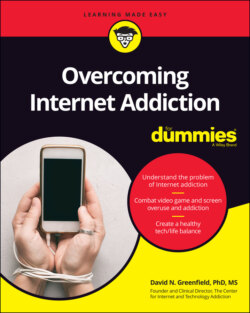Читать книгу Overcoming Internet Addiction For Dummies - David N. Greenfield - Страница 57
GABA
ОглавлениеAnother reason the brain does a poor job of buffering the desire for pleasurable activities in children and teens is that the level of the inhibitory neurotransmitter GABA is low during this period. As I mention earlier in this chapter, dopamine is like the accelerator of the pleasure drive, and GABA is like the brake. The body uses dopamine and GABA together, like an adaptive cruise control, to modulate pleasure drives. Children, adolescents, and young adults have much more dopamine compared to GABA and therefore are more prone to pleasure-seeking (and hence, addictive) behaviors. Various electronic amusements (Internet screens) can provide the means for satisfying this craving for pleasure.
One of the interesting things researchers have noticed about adolescence and addictions is that the prevalence of some substance-based abuse and addictions has declined over the last decade while other indications of reduced mental health have increased. One of the theories noted by Dr. Nora Volkow, from the National Institute on Drug Abuse (NIDA), is that perhaps all the exciting innervation of dopamine from screen use has somehow served to substitute the role those various substances might previously have fulfilled. So, although that might be a good thing, there are other mental health markers that have increased, such as depression, during the same period. These observations are correlational, but they pose some interesting ideas regarding the drug-like effects that screen use can have.
